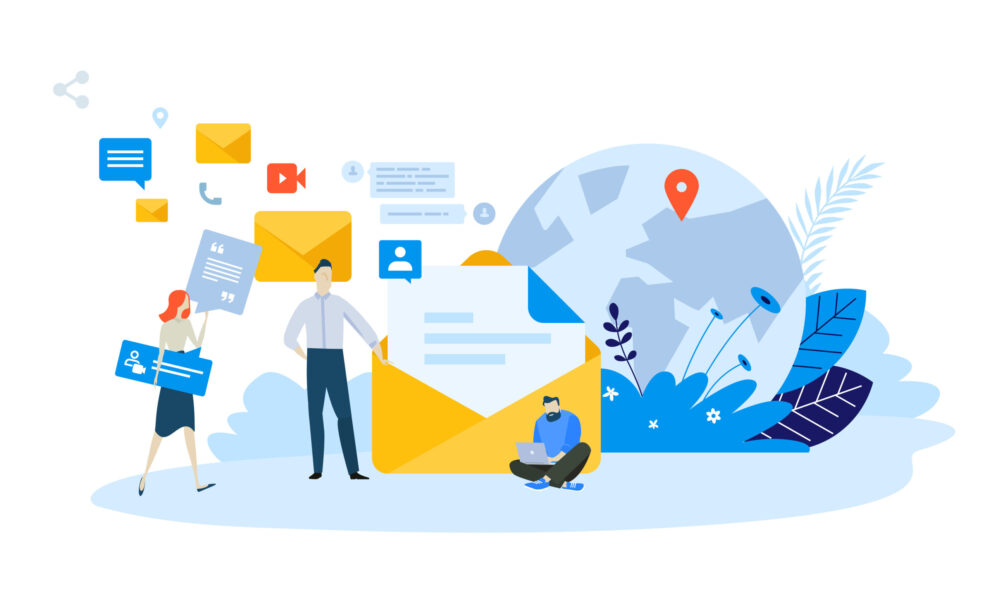Optimize your Email Deliverability: Audience

Summary
In this blog series, I’m tackling email deliverability broken up into three areas—your audience, content, and the tech stuff. This month, we focus on your audience: your audience and how you’re building and segmenting your list.
By Lisa Heay, Director of Business Operations at Heinz Marketing
It’s no secret that business is tough right now. Your marketing budgets may be tight, or even non-existent. Maybe you’re putting a pause on your digital ads and relying on email for your next campaign. You need to keep the demand generation engine running, after all.
If that’s the case, that email needs to count! It needs to be seen, not deleted or missed entirely!
We’ve been in the same boat, and spent some time learning about how to optimize email deliverability. You’d think there is a magic tool out there that will guarantee your placement in the primary inbox, but it’s much more nuanced than that.
To fully understand and optimize email deliverability, you need to tackle it from multiple angles – your audience and how you’re building and segmenting your list; your content and what you are sending; and finally your systems and tech that supports your email delivery.
This is not just a marketing operations problem—your whole demand generation team is responsible for ensuring your emails are delivered.
In this blog post series, I’ll tackle each of these areas in more detail. Follow along each month and optimize your email deliverability from the ground up.
Let’s get started.
But first –
Ground Zero
You may be told to increase open rates. But by how much? It’s important to first understand where you are starting from and how you compare to others in your industry. You won’t know what success looks like after you make some changes unless you know where you’re starting from.
To get started, pull your deliverability and open rates for your various email types – newsletters, nurtures, promotions, etc., so that you can understand where you are today. Depending on your various emails and the associated audiences, you may have one targeted program that is knocking it out of the park, and another that isn’t.
Next you’ll need to understand what the average is for others in your space. This isn’t an easy feat as every resource I’ve checked has a different average. But take a look for your industry and determine what your industry average looks like across resources.
Here are some benchmarks from HubSpot, Campaign Monitor, and Mail Chimp, but many other resources exist out there.
What these resources can agree on is the average across the industries they studied falls around 21%. How do your various email programs compare?
Now that we have the baseline set, let’s optimize!
First up – your Audience
It’s tempting to jump in to start tweaking your emails and tinker with the technology pieces, but you should really start with the basic foundations of your email marketing programs – your audience.
Knowing who you are sending to and ensuring your messages are valuable to that audience is of crucial importance. You could send your best written email, but if you are not someone that people want to hear from, it doesn’t matter.
According to Entrepreneur, “you have eight seconds to hook your customers before their short attention span whisks them away.” Part of that is content – of course, and we’ll get to that later on in this series, but a large part is relevance to your intended audience.
Determine your ICP
Who are you selling to? This should be a foundational element of your marketing strategy long before you get to email marketing and campaign programs.
According to HubSpot, an ideal customer profile “defines the perfect customer for what your organization solves for. This is a fictitious company that has all of the qualities that would make them the best fit for the solutions you provide.”
This is a huge topic in itself, but one you should not skip if it hasn’t yet been developed in your organization. If you need help getting started, check out some posts on building your ideal customer profile from Brittany Lieu and Josh Baez.
List Building
Assuming you know who you are targeting, you need to take a look at how you are building your database. Are you using reputable sources? Do you understand the deliverability rates for those lists?
It’s great when people come inbound and fill out your website forms, but often we need to build up our lists using outside sources.
Some great ways to grow your list are to attend or sponsor events in your industry, partner on a like-minded webinar topic where you can attract leads outside your current reach, or participate in content syndication where your assets are shared outside your network in hopes they’ll volunteer their information to you.
But this takes time and resources. Often you have a marketing campaign and need to build your list fast. That’s where list vendors and databases come in—ZoomInfo, LeadIQ, Seamless.AI. etc. Here’s a blog post on evaluating potential list vendors, if this is the route you want to take.
The point is – if you are using a list database, these leads are going to be freezing cold. Cold lists are often a reality, but what you do next is key. If these leads aren’t engaging with your content, your email deliverability will suffer. Email service providers can de-prioritize your messages if you’re seen as a sender with low engagement.
To initially engage our cold lists, we send a welcome email with links to recent blog posts (depending on the segment we’ve downloaded) to appeal to the group and draw some clicks. We also give them an opportunity straight out of the gate to opt out, before entering our stream of email marketing programs.
List Hygiene
It’s not the size of your database that counts—optimizing email deliverability is about ensuring your database remains actively engaged.
This requires a regular cadence of list hygiene and audits. I have a set of lists I turn to at least every 6 months to review and purge, as necessary. Some examples include:
Unsubscribes and Inactive – these folks have opted out of email from us, and have not visited the website or participated in any other activity captured in our marketing automation platform for at least 90 days. It’s safe to say that they are just not interested. Maybe they’ll find their way back to you someday, but your efforts should not be wasted here.
Undeliverable and Inactive – this list is made up of those who you have been unsuccessful in reaching and who have also taken no action with you.
Junk and temporary email addresses – You know what these look like. asdf@asdf.com, noway@mailinator.com, etc. Get that stuff out!
One more note – a good rule of thumb when purging – always export your records to save in your files before deleting in case you find yourself in a privacy audit or need to refer back to data. It’s never happened to me in my long Marketing Operations career, but you know how those things work. As soon as you delete for good, you’ll need something.
Re-Engagement
Once cleansed of the junk, evaluate the remainder of your mailable database to find your segment of seemingly good, reachable prospects that are just not engaging. These are your re-engagement targets.
We have a re-engagement drip nurture made up with a handful of top-funnel emails that are sent to people who have been in our database for over a year, but haven’t taken any action within the last several months. If someone clicks any of those sends, we remove them from the stream and they continue receiving other nurtures and newsletters.
If they do not click, they can be purged. I’ve seen others send a single re-engagement email, asking for a click to confirm they want to stay on the list. You could test both – but you must follow through with the deletion as promised.
Remember that consistently sending email to disengaged contacts can affect your sender reputation, which affects where you land in inboxes – or even worse – the spam folder. Having a small but engaged database is better than having a huge list.
Segmentation
You have your list of mailable, engaged prospects, but don’t stop there. Don’t blast your entire database with each email you build. Always ensure you’re pulling relevant lists who have an interest in that particular topic.
We often segment by industry for our industry-specific nurtures, company size, titles, and personas. The more targeted your list, the more relevant and knowledgeable you’ll appear to your recipients. Build that trust and the engagement should follow.
Wrapping Up
Be someone that people want to hear from. That’s it.
By segmenting your database into interests, tailoring your content to those audiences, keeping your lists clean, and being a reputable, knowledgeable sender, you’re on your way.
Check back next month for the next area of focus – your email content, and tips to optimize it for email deliverability.


